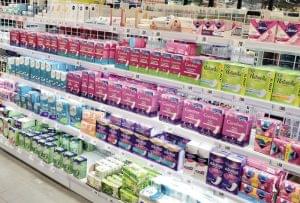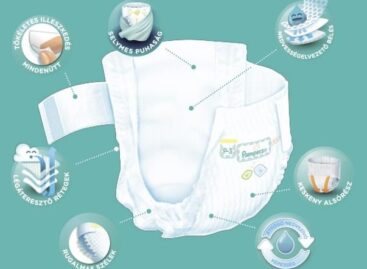Feminine hygiene is still considered a luxury in Hungary
While several EU member states have already reduced VAT on feminine hygiene products to zero, Hungary still charges the highest rate of 27% on essential items such as tampons and sanitary napkins. The latest episode of NAPICSÁRT examines the economic and social effects of the “pink tax” phenomenon – with specific examples, price differences and a European comparison.
A basic need, with a luxury tax
 Menstrual products represent an expense of several thousand forints for households every month. An average menstruating woman spends about 42 thousand forints on them per year, and this amount increases further if we include intimate hygiene products, painkillers or special underwear. All this with a VAT rate of 27%, while in Poland it is only 5%, in Austria 10%, in France 5.5% and in Ireland it is zero.
Menstrual products represent an expense of several thousand forints for households every month. An average menstruating woman spends about 42 thousand forints on them per year, and this amount increases further if we include intimate hygiene products, painkillers or special underwear. All this with a VAT rate of 27%, while in Poland it is only 5%, in Austria 10%, in France 5.5% and in Ireland it is zero.
The Hungarian government has introduced a temporary mark-up cap on feminine hygiene and cosmetic products in drugstores from May 19, 2025, capping retailers’ profits at 15% compared to the January level or 15% – whichever is lower. However, this is only a partial relief, as the high VAT rate remains in force.
Pink tax: price difference by gender
The term “pink tax” is not an official tax type, but a market phenomenon that refers to the fact that products intended for women are often more expensive than their male counterparts with the same function. The difference is often only in color or fragrance – but the price is significantly different. In the case of razors, shower gels, shampoos, body lotions, and even ballpoint pens, women’s versions are often overpriced. Manufacturers are building on the fact that women are conscious, regular buyers who are willing to pay more for beauty products – and the NAPICSÁRT program shows the impact of this with concrete examples.
Growing market – growing burdens?
The global feminine hygiene products market reached $25 billion in 2023 and is forecast to grow to $39 billion by 2033. Part of the reason for this growth is the rise of sustainable, reusable and biodegradable products. However, these are often still difficult to access or much more expensive, so they are not a realistic alternative for many consumers.
The question is not only serious from an economic but also a social point of view: is it justified that the costs of ensuring basic bodily hygiene represent additional expenses for women? It’s not just consumers who need to find the answer – regulators and manufacturers also have a role to play in ensuring that women’s needs are not considered a luxury, but a fundamental right in the future.
Related news
We subjected hygiene products to laboratory testing
🎧 Hallgasd a cikket: Lejátszás Szünet Folytatás Leállítás Nyelv: Auto…
Read more >National gyro inspection: 350 buffets and restaurants inspected, 85 procedures, 25 units closed, 1,300 kg of food withdrawn from circulation
🎧 Hallgasd a cikket: Lejátszás Szünet Folytatás Leállítás Nyelv: Auto…
Read more >A plastic-free future? This is how biodegradable hygiene products are gaining ground
🎧 Hallgasd a cikket: Lejátszás Szünet Folytatás Leállítás Nyelv: Auto…
Read more >Related news
Fidelity Kitekintés 2026: Ne becsüljük alá az inflációt!
🎧 Hallgasd a cikket: Lejátszás Szünet Folytatás Leállítás Nyelv: Auto…
Read more >Company Trend 2025 – domestic businesses under strong pressure, in a negative trend
🎧 Hallgasd a cikket: Lejátszás Szünet Folytatás Leállítás Nyelv: Auto…
Read more >Surprising ordering statistics: foodora sampled the ordering habits of Hungarians in 2025
🎧 Hallgasd a cikket: Lejátszás Szünet Folytatás Leállítás Nyelv: Auto…
Read more >







